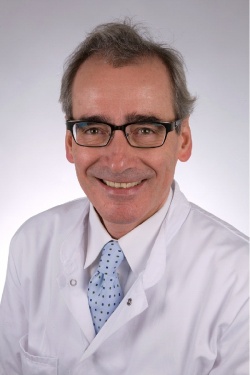Denmark’s top-class robot technology
The world’s utmost automated hospital laboratory system is operational
Copenhagen’s Hilleroed Hospital now has the world’s most advanced medical laboratory system, providing full automation from the point of drawing a blood sample to results delivery.

Using world-class robot technology, the system was designed to meet the specific requirements of clinical and laboratory staff to analyse blood samples and deliver results as quickly as possible.
In seeking inspiration for their fully-automated laboratory system, the team from the Department of Clinical Biology visited hospitals in Scandinavia and Japan, where they saw excellent solutions but also noted potential for improvements.
After drawing up quality specifications about the functions they required for their proposed laboratory system, the Hilleroed team invited five major companies to give a presentation on creating a system. Dr Georg Sölétormos, Medical Director, Department of Clinical Biochemistry, North Zealand Hospital, which incorporates Hilleroed Hospital, said: ‘We chose Siemens because they offered a flexible and fully-automated system and one that was very user-friendly.’
Prior to installing the Siemens system, he explained, the 6.8 million analyses conducted annually were performed in different hospital areas, wasting time transporting samples, which prompted the department to upgrade its ageing system with the latest robot automisation.
Installed last autumn (opened in January), the system features a blood sample-receiving module connected to two tube transportation systems from the emergency department and the ambulatorium. When a blood sample is taken, it is barcoded, scanned with a hand-held computer and sent to the lab via tube, where it is lifted onto a transportation track that registers the sample arrival.
From the output, track samples go to centrifuges, are de-capped and transported to an ADVIA Centaur XP system, which runs immunological analysis, two Siemens coagulation systems and to three Dimension Vista 1500 Intelligent Lab systems. There is also a tracking aliquoter for samples that need allocation for further analysis. This, the most automated system performs chemical, bio-chemical and immune-analysis, Dr Sölétormos pointed out.
Hourly capacities for each part of the system are: input/output module (800 tubes), receiver unit (1,000 tubes), centrifuge (300 samples an hour if centrifuging for 10 minutes), de-capper (800 tubes), aliquoter (500 tubes). The transportation track can handle 3,600 tubes an hour, each Centaur XP system can conduct 240 tests an hour and the Dimension Vista system performs up to 500 tests an hour.
In an area with a population of 380,000 people this, the largest lab in Copenhagen, serves the 17 clinical wards at Hilleroed Hospital, eight wards at a neighbouring hospital, the ‘health house’ in Copenhagen and 200 general practices in the area.
‘What is especially new is that the analytical equipment is all covered in the same system but integrated with different IT solutions, so the results are directly delivered to the clinical ward or general practitioner through the IT system,’ Dr Sölétormos added.
Full automation, from sample taking to results delivery, cutting time by at least 50%, means quicker patient treatment, also with fewer faults through greater automisation and integration with the IT system. ‘Our goal is for 85-90% of our production to be delivered within an hour,’ he said. ‘Earlier diagnosis means a decision can be taken sooner on whether the patient should go into a hospital bed, be managed by the GP or be seen in the ambulatorium the day after.’
No staff numbers were lost through the implementation. ‘We implemented a function called the “diagnostic partner”, where these staff are integrated within the daily work of the clinical ward to give advice on laboratory-related questions and help manage laboratory IT systems,’ he explained.
The hospital’s investment will see greater efficiency in sample analysis, and savings with significantly lower numbers of blood sample tubes used, less use of reagents, and reduced hospitalisation.
A new hospital is planned for Hilleroed in 2020, with the Department of Clinical Biochemistry continuing the evolution of its automated lab processes to hold its ranking as ‘the most automated lab in the world.
Report: Mark Nicholls
20.05.2013











